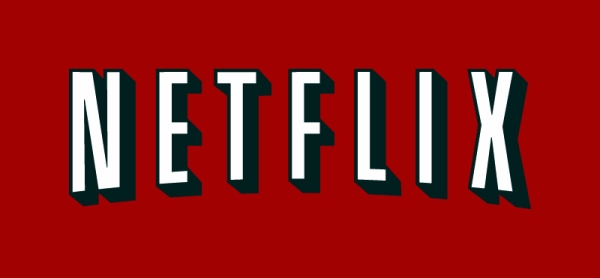 Sony recently lowered its estimated earnings for the fiscal year ending 31 March, 2014. Having expected to earn ¥80 billion ($782 million / £463 million) during the financial year, it has now revised that figure to ¥26 billion ($254 million / £150 million). One of the reasons behind this was down to “additional expenses” incurred with Sony selling and exiting the PC market. However, the other was the fall in sales for Blu-Ray, with Sony citing how this was “due to demand for physical media contracting faster than anticipated, mainly in the European region.”
Sony recently lowered its estimated earnings for the fiscal year ending 31 March, 2014. Having expected to earn ¥80 billion ($782 million / £463 million) during the financial year, it has now revised that figure to ¥26 billion ($254 million / £150 million). One of the reasons behind this was down to “additional expenses” incurred with Sony selling and exiting the PC market. However, the other was the fall in sales for Blu-Ray, with Sony citing how this was “due to demand for physical media contracting faster than anticipated, mainly in the European region.”
A statement from Sony read:
“The future profitability of the disc manufacturing business has been revised. Consequently, Sony has determined that it does not expect to generate sufficient cash flow in the future to recover the carrying amount of long-lived assets, resulting in an expected impairment charge…the fair value of the entire disc manufacturing business also has decreased, resulting in an expected impairment of goodwill.”
As a successor to DVD, Sony’s Blu-Ray format was introduced in 2006, and after telling Toshiba’s HD-DVD where they could stick it, it became the HD format of choice for consumers. The expectation was that people would upgrade their physical media to high-definition, but there’s one thing they didn’t expect… the cloud… cloud storage, that is.
If you wanted proof that the way we watch films and programmes has changed, then here it is. When it comes to films we’ve missed on the big screen, it seems that more of us are saying, “I’ll catch it on Netflix.” In much the same way as we listen to music, many of us are starting to engage with our products digitally (and while we’re at it, when’s the last time you bought a CD?).
Walking down to the rental store to hire a film? Now you don’t even have to get up off the sofa to put a disc in the tray. The films are being sent to us, streamed into our living rooms. For some, this is also their preferred method, especially with the price of tickets to the cinema rising, and the theatrical window also shrinking. How long before studios cut out the middle-man and start streaming films directly into our brains?
Certainly in the US, the number of people watching streaming media has increased, and following Sony’s statement, they highlight Europe as one region where the demand for physical media has dwindled.
 Here we have the opportunity to watch films whenever and (almost) wherever we want. With the likes of Netflix, Sky Go, Amazon Prime Instant Video, iTunes, Google Play, Blinkbox, Now TV, Wuaki.tv and Knowhow Movies… well… there are more online streaming services than there are dedicated high street retailers that sell DVDs and Blu-Rays. The quality from some of these services largely depends on your Internet connection, so in some cases, while it’s not exactly 1080p, for many, it’s still watchable. It is worth noting that Netflix has recently offered an Ultra HD 4K service, for those who actually own a 4K set.
Here we have the opportunity to watch films whenever and (almost) wherever we want. With the likes of Netflix, Sky Go, Amazon Prime Instant Video, iTunes, Google Play, Blinkbox, Now TV, Wuaki.tv and Knowhow Movies… well… there are more online streaming services than there are dedicated high street retailers that sell DVDs and Blu-Rays. The quality from some of these services largely depends on your Internet connection, so in some cases, while it’s not exactly 1080p, for many, it’s still watchable. It is worth noting that Netflix has recently offered an Ultra HD 4K service, for those who actually own a 4K set.
The main factor here is that most of us are willing to give up quality for convenience (it would also suggest that maybe few of us feel the need go through those special features – in some cases we’ve already come across many ‘behind the scenes’ videos on YouTube). Why buy it on Blu-Ray if I just want to watch the film, it’s easier to stream it and the cost means I end up saving money for an extra pack of Hobnobs too?
Jeffrey Katzenberg of DreamWorks is predicting that in the future a new film will play for just three weekends, after which your purchase of it will depend on the size of the screen you choose to view it on:
“A movie screen will be $15. A 75” TV will be $4.00. A smartphone will be $1.99. That enterprise that will exist throughout the world, when that happens, and it will happen, it will reinvent the enterprise of movies.”
You know, because some people out there would actually watch Gravity on a mobile phone. Katzenberg believes that this structure will happen in about ten years. But unless there’s some kind of security encryption waiting to be cracked, what’s to stop someone from paying the $1.99 smartphone option, only to then use a mini HDMI lead or something like Chromecast to view it on a bigger screen?
Maybe the road is still missing a few signs. Surely both mediums can co-exist? Or do you feel that it won’t be long before all our media is streamed from the cloud? How much of your current viewing is streamed? Would it matter to you if your films weren’t physically sitting on your shelf? Feel free to leave a comment below.
Sources: Sony | The Verge | Netflix | Variety
Originally published on MCM Buzz on 6 May 2014.


